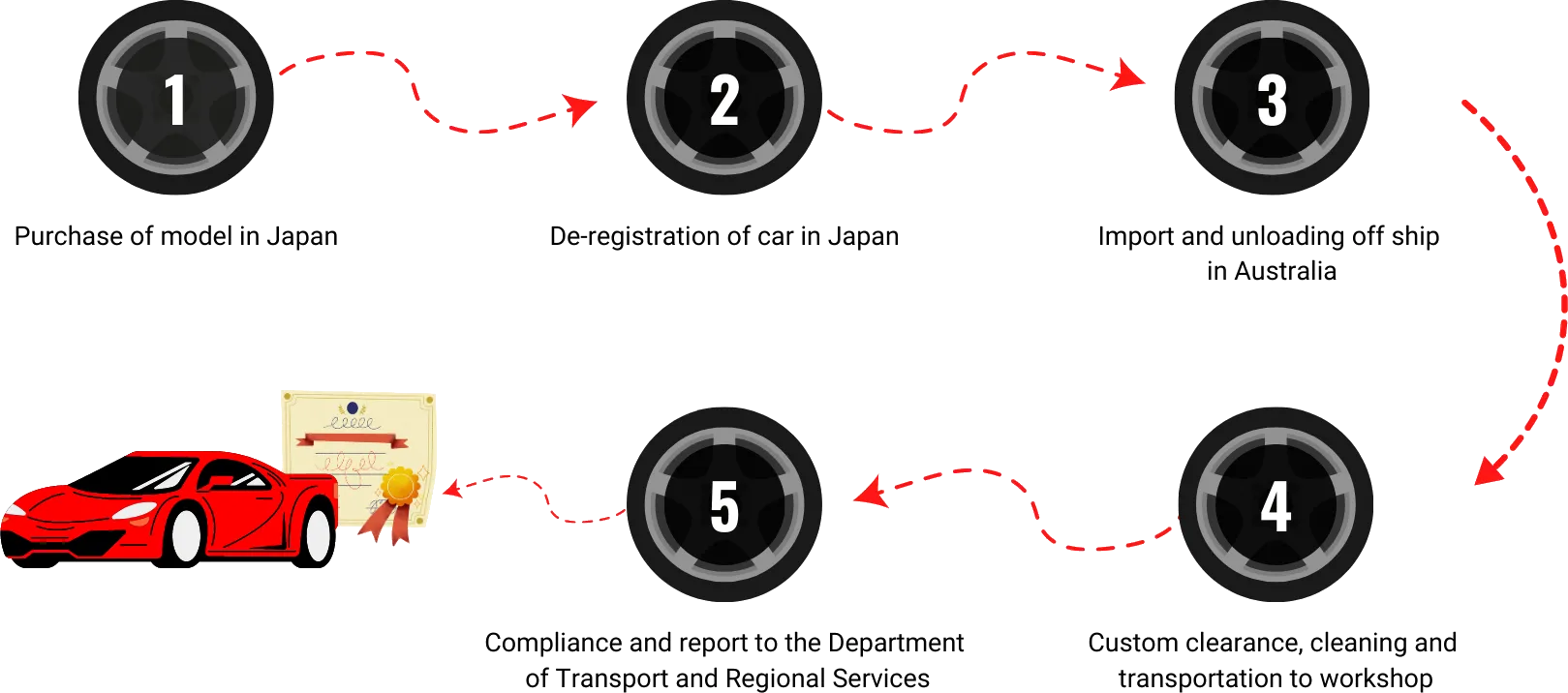













For any vehicle imported to Australia, there is a stringent process that must be complied with from the point the car is purchased in Japan, and imported and unloaded off the ship once in Australia, through to modifications carried out at the compliance workshop. This ensures that the vehicle is certified as safe to be operated and driven on Australian roads.
Failure to comply will result in your vehicle not being permitted on Australian roads and other penalties.
At Jap Division, we’re experts at maintaining all the regulations, standards and guidelines across the full process and ensuring the quickest compliance turnaround for your model.
Jap Division is an RAWS-certified workshop that is ADR compliant and we’re authorized to comply a massive range of models for you. Here, we’ve included a list of some of the most popular models we help our customers comply.







We help comply a wide range of models throughout the year for hundreds of happy customers and the process we adopt has remained the same throughout. It is simple and we’ve outlined it below.

The specific import laws for Japanese Domestic Market (JDM) vehicles vary depending on the type of vehicle and its age. However, in general, to import a JDM vehicle into Australia, it must meet the following requirements:
The length of time it takes to import a JDM vehicle into Australia depends on several factors, including the type of vehicle, its age, and the specific requirements that need to be met. On average, it can take several months to complete the process, however it can vary.
There are several reasons why there are so many used cars available in the Japanese market:
All these reasons combined make the Japanese used car market a vast and diverse one, and many countries, including Australia, import a significant number of used cars from Japan.
If your JDM vehicle gets damaged during shipping, you should take the following steps:
Contact Info